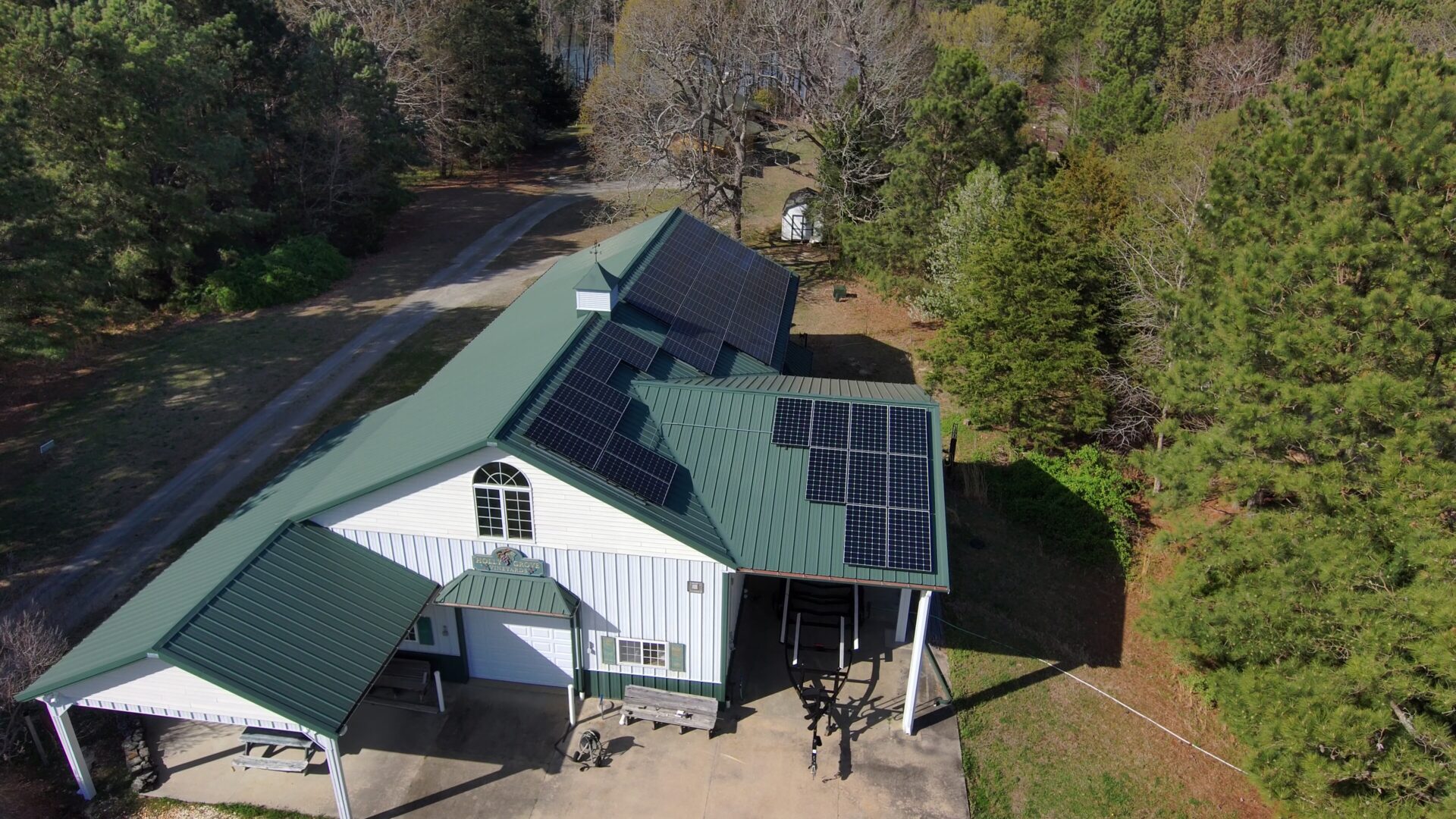Chesapeake homeowners transform energy use through solar
- IRA,
- Stories

Paula Paschall and Jonathan Bess are homeowners from the rural Franktown on Virginia’s Eastern Shore. Paula, an information technology specialist, and Jonathan, a recently retired Navy veteran and civil servant, consider it their forever home. As the couple plans for the future, they’ve focused on making their property more sustainable and affordable, ensuring it remains a refuge they can enjoy well into retirement. Solar has been a key part of that transformation.
The couple had considered solar for years, and in 2023, the timing felt right to make the switch. Developments in panel efficiency and more affordable battery storage met the criteria of the system they wanted, and the solar Investment Tax Credit (ITC) would help them save on the cost. “The federal tax credit probably was the tipping point,” shared Jonathan. Through the ITC, homeowners can deduct up to 30% of a solar system’s cost, including batteries, from their federal income taxes. This policy allowed Paula and Jonathan to realign their energy use around a distributed renewable source.
The pair installed a 22.8-kilowatt (kW) solar array with a battery backup system, saving $28,000 through the ITC. In its first two years of operation, the investment is paying off. “In the summertime, we were not paying any electric bill,” said Paula. “Going from $400 to $500 a month to nothing … that is a huge difference.”
After seeing such a strong return, they decided to maximize their potential benefit by expanding their production and storage capacity. In January 2025, they added an 8 kW array and additional batteries. When they file this year’s taxes, the credit will provide another $18,000 in savings.
Expanding the system will support their electrification goals and maximize the value of the energy they generate. Instead of sending excess energy back to the grid, the surplus is stored for later use. The reserves can be used to meet everyday demand, such as charging their electric vehicles, or provide backup power during a grid outage. “I like the security,” shared Paula. “If we do lose power for days on end, we probably would be all right because, if the sun is shining, we are getting power.”
The savings from tax credits enabled the couple to pursue solar as a part of their retirement plan. “It really was the motivating factor,” shared Jonathan. “We wanted to get solar once we realized we were going to be here full time. As you retire, your income becomes fixed, and you can just see the electric costs going up.”
By investing in solar, the homeowners have protected themselves from the financial impact of those rising electricity rates. “The thing that people do not realize is that the cash flow is the best part of it, because … in the summertime we are not paying an electric bill and in the wintertime we are probably not going to be paying much of an electric bill,” said Paula.
Despite the clear benefits for homeowners, the pro-solar investments that enabled Paula and Jonathan to achieve energy independence are at risk. Even with broad support from majorities of Republicans, Democrats, and Independents, programs like the 30% ITC face being eliminated. The couple hopes their elected officials will take action to protect these vital programs. “We would want support at the state and federal level to continue because it only makes sense,” argued Jonathan. Federal clean energy investments save Virginia families money and create good jobs. Local solar benefits everyone by generating energy where and when it’s needed most.
Making solar more affordable is essential to ensuring that more Virginians, like Paula and Jonathan, can access the benefits of distributed renewable energy.
Act Now: Urge Congress to protect solar energy tax credits for all Americans
Solar energy is garnering support from both sides of the aisle. You can help keep up the momentum by making it loud and clear to your Senators and Representatives that Americans support federal solar investments.
Some members in Congress want to repeal successful policies that have made going solar more affordable for American families and businesses. Please use the form on this page to tell your federal representatives that you support smart investments, like the 30% solar tax credit.
Personalize your message!
If you have solar, explain how it is lowering and controlling your household’s energy costs. If you don’t yet have solar, tell them how these investments will make solar accessible for people like you.
Get the latest on solar straight to your inbox.
Fight for your solar rights.
Everyone has the right to go solar. Spread the sunshine nationwide and in your local community by taking action, joining events, and more.